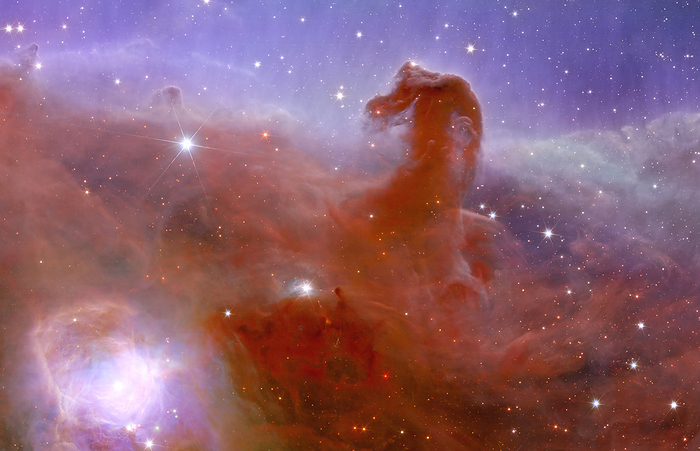
RM
Horsehead Nebula, Euclid image
Euclid telescope image of the Horsehead Nebula, one of the first five images released from Euclid on the 11th of November 2023. The Horsehead Nebula, also known as Barnard 33, forms part of the Orion constellation. At approximately 1,375 light years away, it is the closest giant star-forming region to Earth. This image was created in about 1 hour, showcasing Euclid's ability to create sharp images of broad regions of space faster than any previous telescope. This speed will allow Euclid to create the largest 3D map of the universe to date as part of its mission to investigate how dark matter and dark energy have shaped the universe. By observing billions of galaxies up to ten billion light years away, Euclid will provide a valuable insight into the way that galaxies expand and move. From this, it will be possible for the properties of dark matter and dark energy to be inferred. This image was obtained by combining data from Euclid's visible instrument (VIS) and near-infrared spectrometer and photometer (NISP), by EUROPEAN SPACE AGENCY/SCIENCE PHOTO LIBRARY

More
Top Categories
